The Pineapple (Ananas comosus) is a tropical plant with edible fruit, and it belongs to the family Bromeliaceae. The cultivation of Pineapples not only contributes to food security but also adds diversity to crop production.
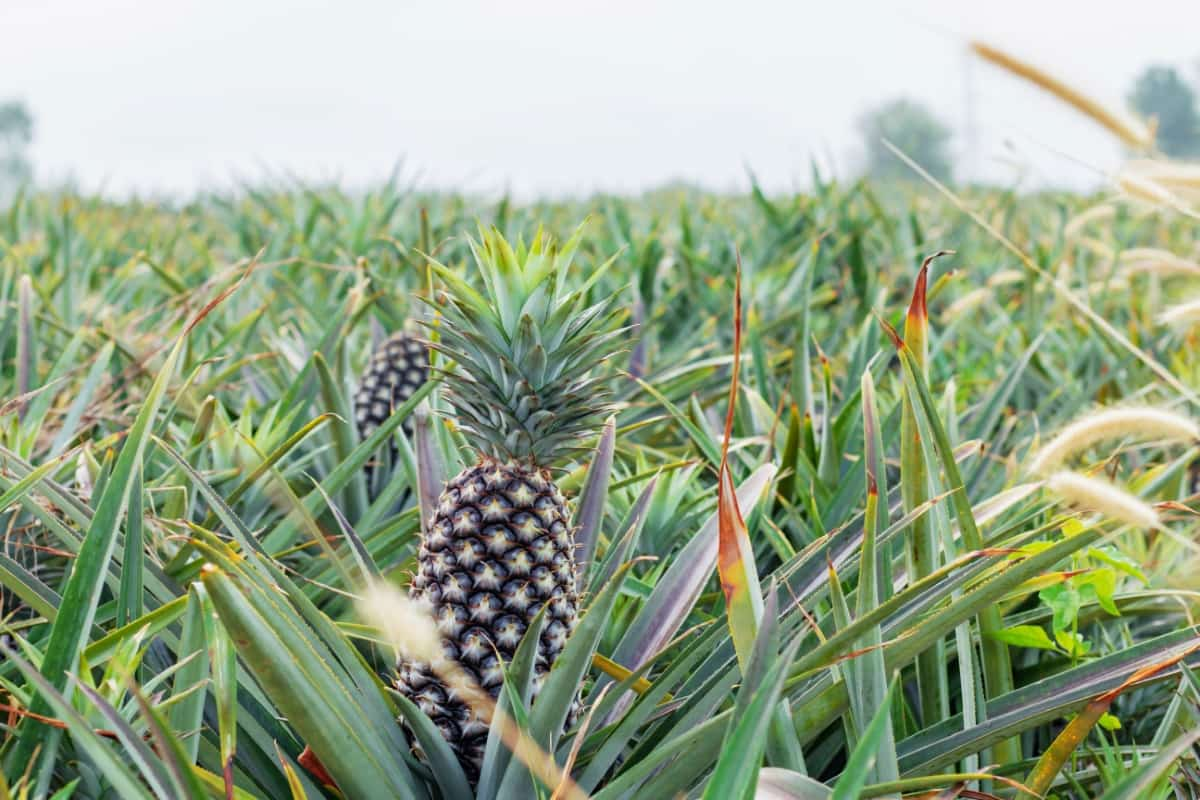
Choosing the Right Pineapple Variety
With a wide range of Pineapple varieties available, each with its unique characteristics and flavors, it’s essential to select the one that suits your climate and soil conditions. Different varieties have varying characteristics, such as taste, size, and resistance to diseases. Some popular Pineapple varieties include the Smooth Cayenne, Queen Victoria, and Sugar Loaf. Each variety requires optimal growth and productivity. Contact experts to make an informed decision that suits your farming goals.
Understanding Soil Requirements
Understanding the soil requirements is crucial for a successful harvest in Pineapple farming. Pineapples thrive in well-drained, sandy loam soils with a pH level between 5.0 and 6.0. Soil rich in organic matter helps Pineapple plants grow healthy by providing essential nutrients and aiding in water retention. Prior to planting, it’s important to ensure that the soil is free from any compacted layers that may hinder root development.
Proper soil preparation involves loosening the ground and incorporating organic compost or fertilizer to improve fertility levels. This sets the foundation for robust plant growth and optimal fruit production. Soil testing throughout the planting season can help monitor nutrient levels and adjust fertilization practices accordingly. By paying attention to your soil’s needs, you can ensure a bountiful Pineapple harvest year after year.
Climate Considerations for Pineapple Cultivation
Pineapple plants thrive in tropical and subtropical climates with warm temperatures all year round. These plants require plenty of sunlight for optimal growth, so choose a location that receives ample sunshine throughout the day. Additionally, Pineapples prefer well-drained soil that retains moisture but doesn’t become waterlogged.
In case you missed it: Pineapple Farming, Cultivation Techniques – A Full Guide
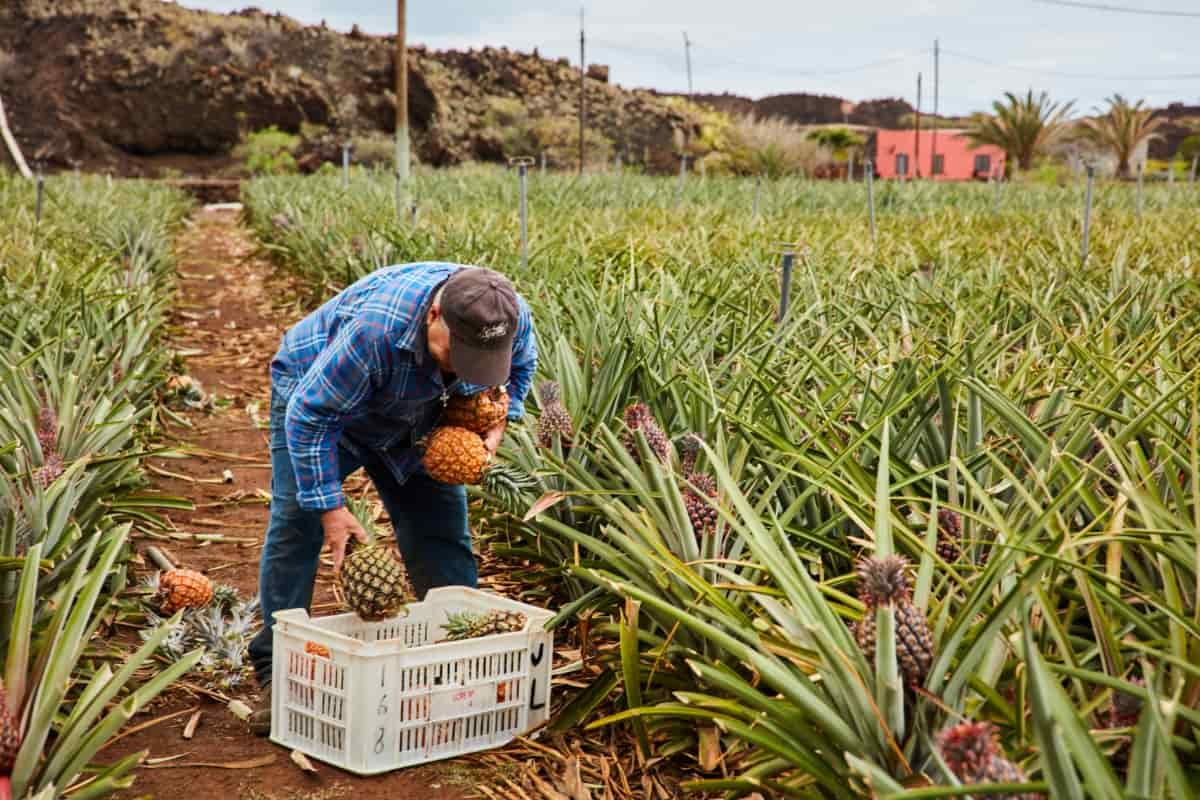
Rainfall plays a significant role in Pineapple farming as these plants need consistent moisture to develop properly. Extreme weather conditions like frost or prolonged periods of drought can harm Pineapple crops, affecting their growth and fruit production. Therefore, selecting a location with stable weather patterns is essential for cultivating healthy Pineapples.
Land Preparation and Plantation Setup
Before Pineapple planting, ensure that the soil is rich in organic matter to support healthy plant growth. Clear the land from debris or weeds that could hinder the development of your Pineapples. A clean and fertile environment is essential for optimal results. Once the land is cleared, prepare beds or ridges where you will plant your Pineapple suckers.
Make sure there is enough spacing between each plant to allow for proper airflow and sunlight exposure. Consider incorporating compost or fertilizer into the soil before planting to provide essential nutrients for your Pineapples’ growth. This step can significantly impact the yield and quality of your produce.
Planting Techniques for Pineapples
Planting Pineapples requires careful attention to detail to ensure a successful crop. Before planting Pineapple, it’s essential to make the soil by loosening it and removing weeds. One common technique is using Pineapple suckers, which are small offshoots from mature plants. These suckers can be planted directly into the soil and will eventually grow into full-sized Pineapple plants. Another popular method is planting Pineapple crowns, which are the leafy tops of harvested Pineapples.
By allowing these crowns to dry out for a few days before planting them in well-draining soil, you can encourage root growth and establish healthy new plants. For those looking for a quicker method, tissue culture propagation offers a fast and efficient way to produce large quantities of disease-free Pineapple plantlets. This method involves growing plant cells in a nutrient-rich medium before transferring them to soil for further growth.
Irrigation Management in Pineapple Farming
Pineapples require consistent moisture levels to thrive, but they are also susceptible to waterlogging if the soil is excessively wet. Drip irrigation is often preferred for Pineapples, as it delivers water directly to the roots while minimizing water wastage. It helps maintain optimal soil moisture levels and prevents diseases that can arise from overwatering.
In case you missed it: Pineapple Farming in the Philippines: Exploring Varieties to Cultivation Economics
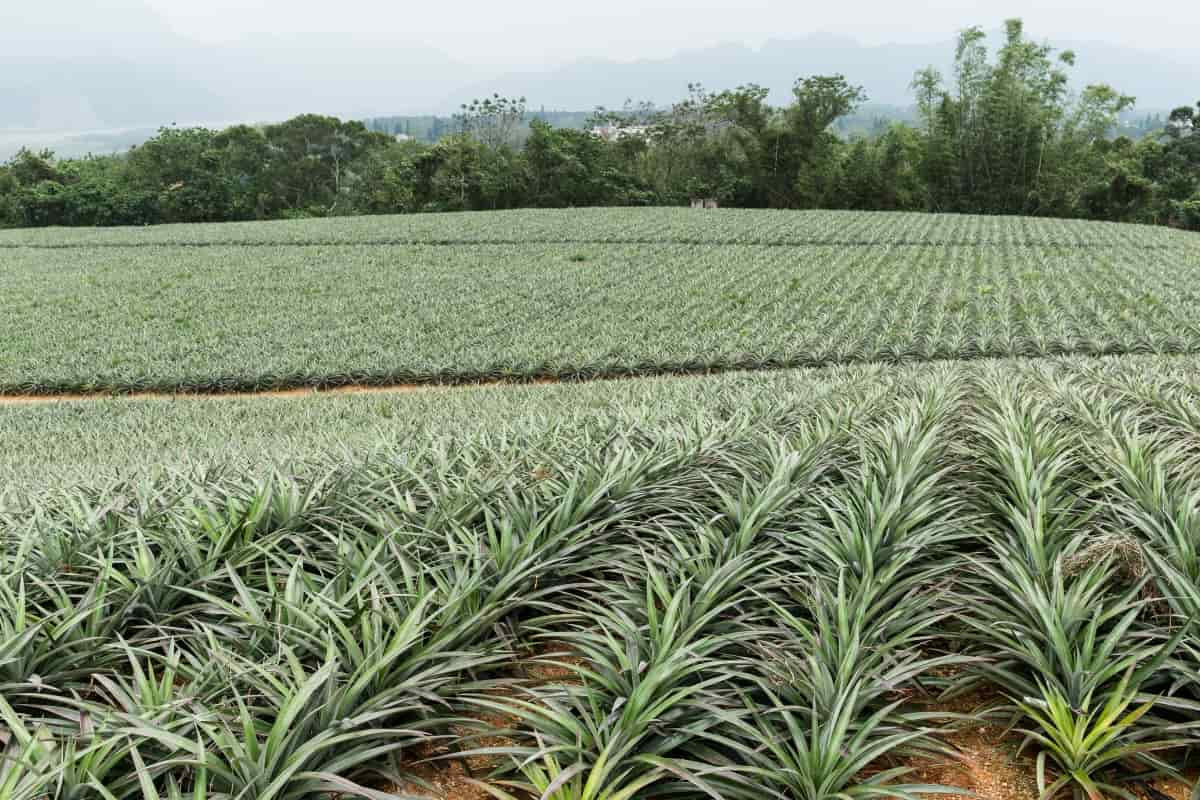
It’s essential to monitor the soil moisture regularly and adjust the irrigation schedule based on weather conditions. During dry periods, more frequent watering may be necessary to ensure the Pineapples receive adequate hydration. Overhead sprinklers should be avoided, as excessive moisture on the foliage can lead to leaf rot and fungal diseases. Proper drainage must be in place to prevent water stagnation in the fields.
Fertilization Practices for Optimal Growth
Fertilization is a crucial aspect of Pineapple farming to ensure optimal growth and yield. It involves providing the necessary nutrients for the plants to thrive. Pineapples require a balanced combination of nitrogen, phosphorus, and potassium, along with other micronutrients like magnesium and calcium. These elements are essential for healthy plant development.
Organic fertilizers for Pineapple plants can be used to enrich the soil naturally. Chemical fertilizers can also be utilized but should be applied in moderation to prevent over-fertilization. Regular soil testing helps determine the specific nutrient requirements of Pineapple plants at different growth stages. Adjusting fertilization practices accordingly can maximize productivity while minimizing environmental impact.
Pest and Disease Management
Some common pests that can affect Pineapples include mealybugs, scales, and mites. These pests can weaken the plants by feeding on them, leading to stunted growth and reduced fruit quality. Implementing IPM (integrated pest management) techniques, such as using beneficial insects or natural predators, can help control pest populations effectively without relying heavily on chemical pesticides. Regular scouting of the plantation for signs of infestation is essential to catch any issues early on before they escalate.
Diseases like fusarium wilt and bacterial heart rot can also impact Pineapple crops if not managed properly. Proper sanitation practices, crop rotation, and fungicide applications, when necessary, are key strategies in preventing disease outbreaks. Implementing proper sanitation practices and using disease-resistant varieties can help mitigate these risks.
Regular monitoring of your Pineapple plants is key in identifying any pest or disease issues before they escalate. By staying proactive with preventive measures like proper irrigation management and keeping a clean plantation environment, you can protect your crop from potential threats.
Weed Control Strategies
Weed control is a crucial aspect of Pineapple farming to ensure optimal growth and yield. To effectively manage weeds in your Pineapple plantation, consider implementing both pre-emergent and post-emergent herbicides. Preparing the soil before planting can help reduce weed pressure during the growing season.
In case you missed it: Pineapple Farming/Production in USA: How to Start, A Step-by-Step Guide to Planting to Harvesting
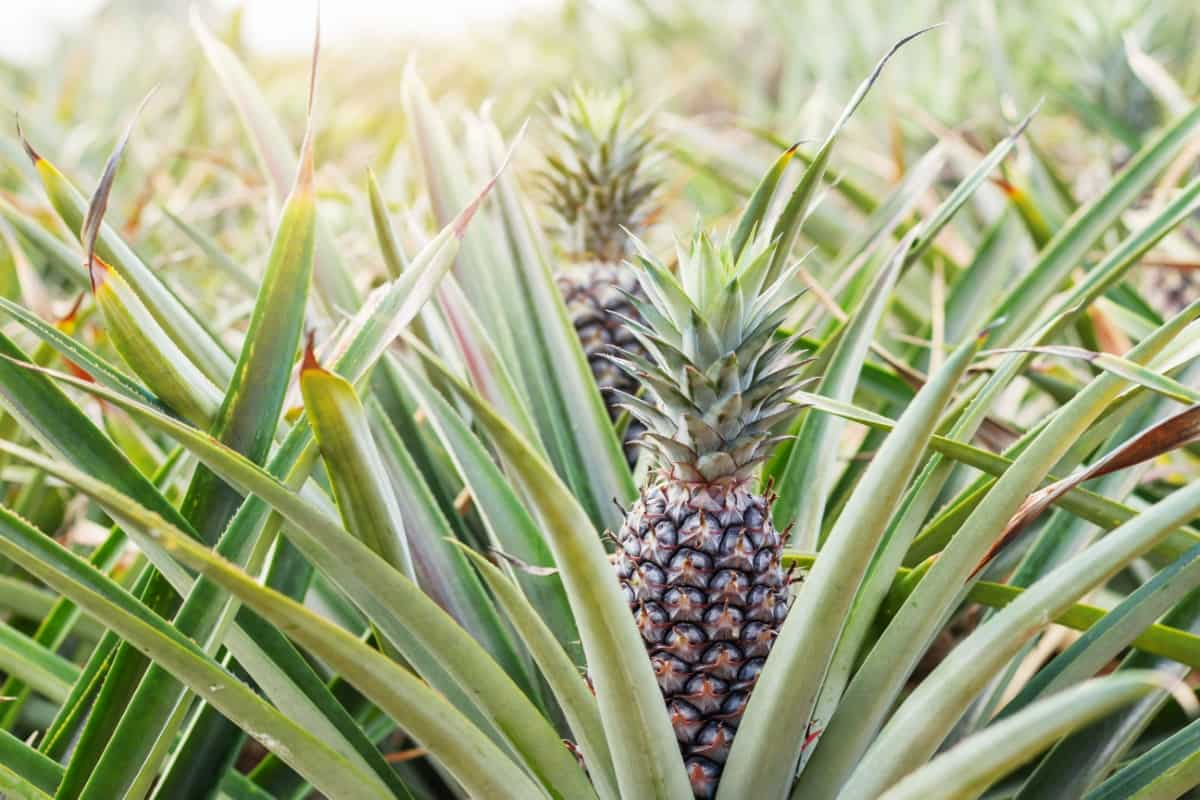
Utilizing mulch around Pineapple plants can also prevent weed seeds from germinating. Hand-weeding is another method that allows for targeted removal of weeds without harming the Pineapple crop. Regularly monitoring your plantation for any signs of weed infestations is essential to address them promptly. Proper spacing between Pineapple rows can deter weed competition for nutrients and water, promoting healthier plant growth.
Monitoring Pineapple Growth and Development
Monitoring Pineapple growth and development is crucial to ensure a successful harvest. Keep a close eye on the plants as they progress through different stages. Look for any signs of nutrient deficiencies or pest infestations early on. Regularly inspect the leaves, stem, and fruit for any abnormalities. Ensure that the Pineapples are receiving adequate sunlight and water. Adjust irrigation practices accordingly based on the plant’s needs.
Measure the height and width of the Pineapple plants regularly to track their growth rate. Monitor flower development closely to anticipate when fruits will start forming. Keep detailed records of your observations and note any changes in growth patterns over time. This data can help you make informed decisions about adjusting fertilization or pest management strategies if necessary. By actively monitoring Pineapple growth and development, you can intervene promptly to address any issues that may arise, ultimately maximizing your yield at harvest time.
Flowering and Fruit Set
Pineapples typically flower about five to six months after planting, with the fruit starting to develop shortly after pollination. The flowering stage is a sight to behold as vibrant colors emerge from the center of the plant before transforming into small fruits. Proper care during this stage is essential to ensure healthy fruit development. Pineapples rely on pollinators like bees and hummingbirds to transfer pollen between flowers for fertilization. Once pollinated, each flower develops into an individual fruitlet that eventually fuses to form the Pineapple.
Harvesting Pineapples
Timing is crucial when harvesting Pineapples. You need to wait until the fruit reaches its optimum ripeness for the perfect balance of sweetness and tanginess. The color of the Pineapple’s exterior can be an indicator of ripeness; it should be golden and give off a sweet aroma. Additionally, the leaves near the center of the crown should be easy to pull out.
In case you missed it: Top 17 Steps/Ways/Methods to Boost Pineapple Yield: How to Increase Production, Size, and Quality
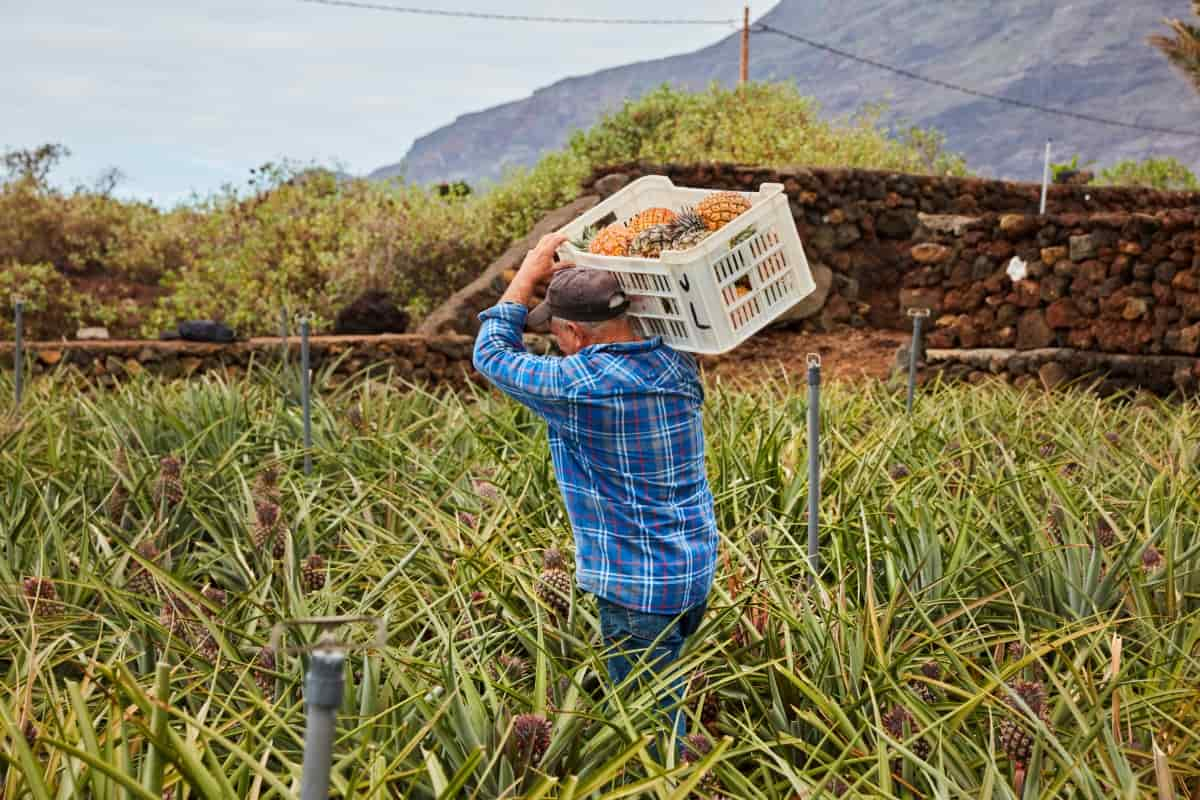
To harvest a Pineapple, grasp the fruit firmly and twist it gently until it breaks away from the plant. Make sure not to damage the surrounding leaves or other fruits on the same plant. Once harvested, Pineapples should be handled with care to avoid bruising or damage. They can be stored at room temperature for a few days or refrigerated for longer freshness.
Expected Yield
The expected yield can vary depending on various factors, such as the variety of Pineapples you’re cultivating, soil quality, climate conditions, and proper farming practices. Typically, a well-maintained Pineapple plantation can yield around 40-80 tons per hectare. However, this figure is just an estimate, and actual yields may differ based on how effectively you manage your farm. Proper irrigation, fertilization techniques, pest control measures, and timely harvesting all play crucial roles in determining the final yield of your Pineapple crop.
Post-Harvest Handling and Processing
Once your Pineapples are ready for harvest, it’s essential to handle and process them carefully to maintain their quality. Post-harvest handling involves a series of steps, from harvesting the fruit to getting it ready for market. After harvesting, Pineapples should be cleaned and sorted based on size and quality. This helps ensure uniformity in the final product that reaches consumers.
The next step is processing, where Pineapples can be turned into various products like canned slices, juice, or dried snacks. Each processing method requires specific equipment and techniques to preserve the Pineapple’s flavor and nutrients. Proper packaging is crucial during post-harvest handling as it protects the fruit from damage during transportation and storage. Whether using boxes or crates, ensuring proper ventilation is key to preventing spoilage.
Marketing Your Pineapple Produce
Once your Pineapples are harvested and ready for sale, it’s important to have a solid marketing strategy in place. One way to market your Pineapple produce is by partnering with local grocery stores, farmers’ markets, or restaurants looking for fresh, locally grown fruits.
Making an online presence through social media platforms can help to attract potential customers interested in buying directly from the farm. Utilize eye-catching imagery of your juicy Pineapples and share interesting facts about your farming practices to engage consumers.
Consider offering unique packaging options or value-added products like Pineapple salsa or jams to diversify your product offerings and appeal to different customer preferences. Building relationships with wholesalers or distributors can also help get your Pineapples into larger retail chains or export markets.
In case you missed it: Organic Pineapple Cultivation – Farming In India
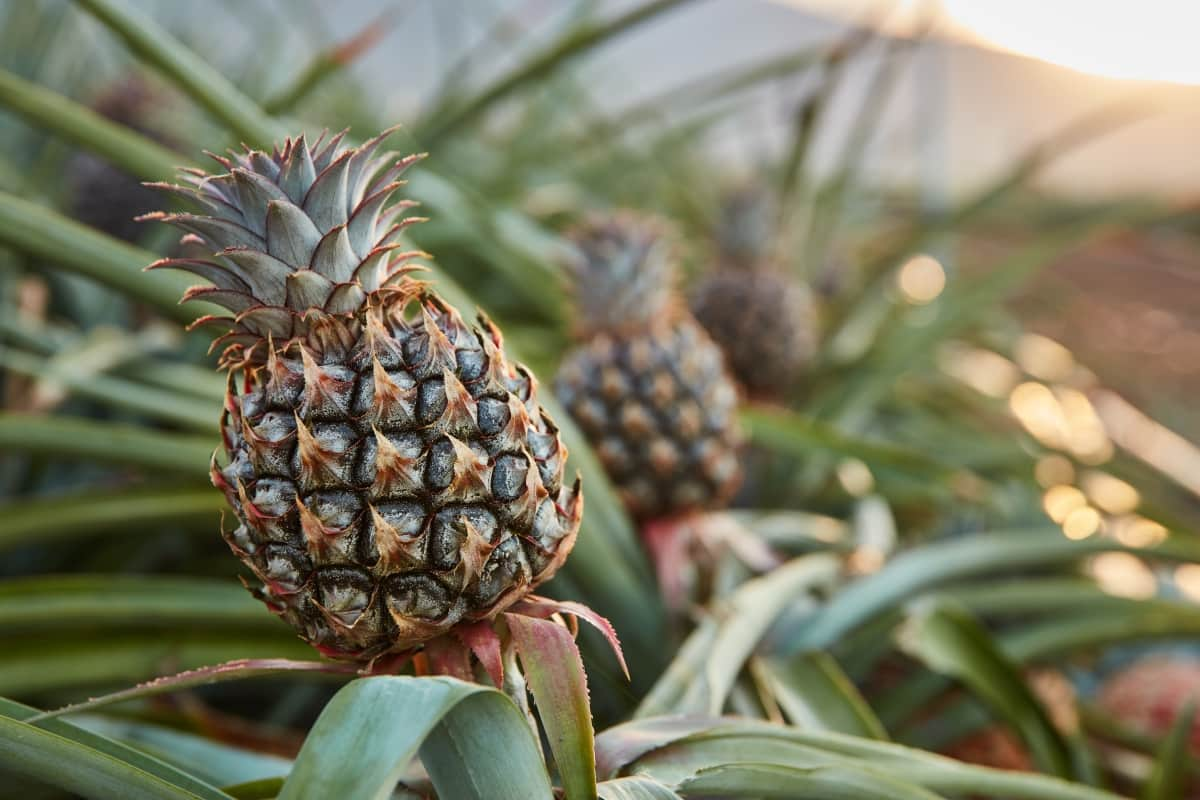
Sustainable Practices and Innovations in Pineapple Farming
Sustainable practices and innovations in Pineapple farming are crucial to ensure the longevity of the industry. One innovative approach is the use of organic fertilizers made from natural sources like compost or manure, reducing reliance on chemical inputs. Implementing integrated pest management techniques can help minimize pesticide usage while controlling pests effectively. Utilizing drip irrigation systems can optimize water usage by delivering precise amounts directly to the plant’s roots, conserving water resources.
Intercropping Pineapples with other compatible crops not only maximizes land use but also promotes biodiversity and reduces soil erosion. Utilizing technology such as drones, GPS, and remote sensing to collect data on soil fertility, crop health, and water availability can enable farmers to make informed decisions and optimize resource use, leading to higher yields and reduced environmental impact.
From its adaptability to various climates to its relatively low maintenance requirements, Pineapple cultivation can be a profitable venture. However, success in Pineapple farming requires careful attention to soil preparation, irrigation, pest and disease management, and post-harvest handling. By applying these techniques, farmers can enhance their Pineapple yields, improve fruit quality, and ultimately achieve greater profitability.
- Economical Aquaculture: A Guide to Low-Budget Fish Farming
- 15 Common Planting Errors That Can Doom Your Fruit Trees
- How to Make Houseplants Bushy: Effective Tips and Ideas
- Innovative Strategies for Boosting Coconut Pollination and Yield
- Pollination Strategies for Maximum Pumpkin Yield
- The Complete Guide to Chicken Fattening: Strategies for Maximum Growth
- Natural Solutions for Tulip Problems: 100% Effective Remedies for Leaf and Bulb-Related Issues
- Revolutionizing Citrus Preservation: Towards a Healthier, Greener Future
- Natural Solutions for Peony Leaf and Flower Problems: 100% Effective Remedies
- Maximizing Profits with Avocado Contract Farming in India: A Comprehensive Guide
- Natural Solutions for Hydrangea Problems: 100% Effective Remedies for Leaf and Flowers
- The Ultimate Guide to Choosing the Perfect Foliage Friend: Bringing Life Indoors
- From Sunlight to Sustainability: 15 Ways to Use Solar Technology in Agriculture
- The Ultimate Guide to Dong Tao Chicken: Exploring from History to Raising
- The Eco-Friendly Makeover: How to Convert Your Unused Swimming Pool into a Fish Pond
- Mastering the Art of Delaware Chicken Farming: Essentials for Healthy Backyard Flocks
- 20 Best Homemade Fertilizers for Money Plant: DIY Recipes and Application Methods
- How to Craft a Comprehensive Free-Range Chicken Farming Business Plan
- Brighten Your Flock: Raising Easter Egger Chickens for Beauty and Bounty
- How to Optimize Your Poultry Egg Farm Business Plan with These Strategies
- Subsidy for Spirulina Cultivation: How Indian Government Schemes Encouraging Spirulina Farmers
- Ultimate Guide to Raising Dominique Chickens: Breeding, Feeding, Egg-Production, and Care
- Mastering the Art of Raising Jersey Giant Chickens: Care, Feeding, and More
- Ultimate Guide to Raising Legbar Chickens: Breeding, Farming Practices, Diet, Egg-Production
- How to Raise Welsummer Chickens: A Comprehensive Guide for Beginners
- How to Protect Indoor Plants in Winter: A Comprehensive Guide
- Ultimate Guide to Grow Bag Gardening: Tips, Tricks, and Planting Ideas for Urban Gardeners
- Guide to Lotus Cultivation: How to Propagate, Plant, Grow, Care, Cost, and Profit
- Agriculture Drone Subsidy Scheme: Government Kisan Subsidy, License, and How to Apply Online
- Ultimate Guide to Raising Araucana Chickens: Breed Profile, Farming Economics, Diet, and Care
- Bringing Hydroponics to Classroom: Importance, Benefits of Learning for School Students
- Ultimate Guide to Raising Polish Chickens: Breed Profile, Farming Economics, Diet, and Care
- Ultimate Guide to Raising Australorp Chickens: Profile, Farming Economics, Egg Production, Diet, and Care
- Silkie Chicken Farming: Raising Practices, Varieties, Egg Production, Diet, and Care
- Sussex Chicken Farming: Raising Practices, Varieties, Egg Production, Diet and Care
- Homemade Feed Formulations for Livestock: Discover Cost-effective Starter to Finisher Feed Recipes
Hi,
I am having a mango orchard of 5.5acres @ Rajapur in ratnagiri district of Maharashtra.
Want to intercrop with pineapple .
Need planting material – Few suckers.
About 1500. Suckers will be enuf to start with.
Cud you plz guide me on supplier for suckers around Rajapur or any other nearby location .
Best regards .
You should check with nurseries in Nagpur.
Namaste, I’m from Nepal . Im planning to farming pineapple . My village is near to Bihar,Jogbani and Siliguri. Could you give phone number along with more information about there so I can visit and collect more knowledge .
Hi, I Need Pineapple Suckers For 5 Acres Of Land…please Provide Supplier Details In Telangana.
Thank you for sharing your knowledge.
Have you ever seen a difference in the size of fruit increase by removing suckers and slips early in fruit development ?
we appreciate your comment.
Hello,
I am from Lao PDR. Could you kindly provide me how to plant the pineapple and harvest in two seasons a year?
Thanks
good harvest defend on good spraying process
from 1st foliar application up to the end of foliar rounds with the good timing. before forcing application……..by getting the good harvest after
We need suckers 1500 pl give some address of suppliers
You are giving the best useful knowledge to farmers
Good job from you. I’m Fedom from Nigeria I want to cultivate this can you be my mentor
I am from Ghana and want to start pineapple farming. could you give any tips as to how to go about planting and what’s necessary to do. I plan to do this in the eastern part of the country where it rains almost year long. I really plan to stand out and also if possible process them into healthy juices for export.